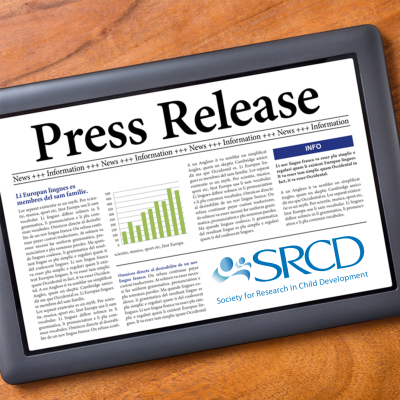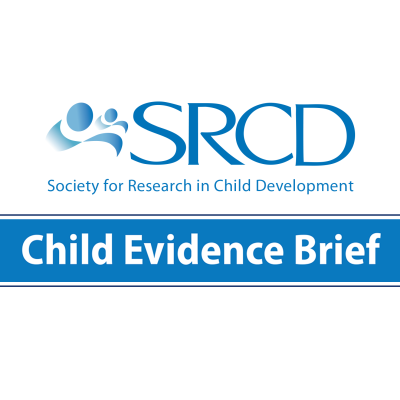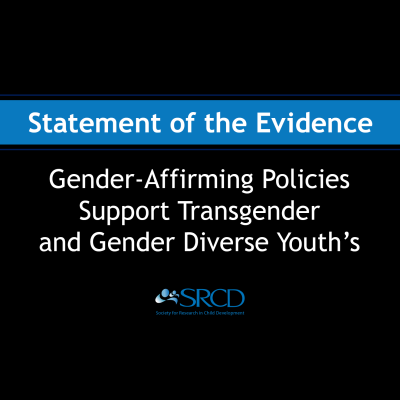Understanding the Impacts of Natural Disasters on Children
Authors
- Betty S. Lai, Ph.D., Counseling, Developmental & Educational Psychology, Boston College
- Annette La Greca, Ph.D., Department of Psychology, University of Miami
Natural disasters present a significant and growing threat to the well-being of children. Every year, 175 million children globally are expected to be affected by natural disasters, including floods, cyclones, droughts, heatwaves, severe storms, and earthquakes.1 Children are particularly vulnerable during natural disasters and experience increased problems regarding their physical health, mental health, and learning after exposure.2–5 Prevention and mitigation policies can reduce children’s risk by helping communities better prepare for and respond to disasters. Increasing school safety, increasing the availability of evidence-based recovery programs, and targeting services to children at highest risk for problems are needed to mitigate the impact of natural disasters on children.
Natural Disasters Are Becoming More Frequent and Severe
Millions of children are affected by natural disasters every year.1 The frequency, intensity, and severity of natural disasters are increasing, expanding their harmful effects.6, 7 In the 10-year period from 2010 to 2019, 119 disasters in the United States met or exceeded $1 billion in damages and costs, affecting children’s homes, schools, and communities.8 Roughly 85% of the billion-dollar disaster events from 1980 to 2019 were weather-related events linked to climate change, including floods, droughts, heatwaves, and severe storms, with others reflecting geophysical events such as earthquakes.8
Natural Disasters Cause Physical Health, Mental Health, and Learning Problems in Children
Children under the age of 18 years are a particularly vulnerable population when exposed to natural disasters.9 Compared to adults, children suffer more severe physical effects from disasters because they breathe more air per pound of their weight, have thinner skin, are at greater risk in cases of fluid loss, and are more likely to lose body heat.10 Disasters also can harm children indirectly. When a disaster affects parents and other adults (such as teachers), children’s care, protection, and support systems are eroded.11, 12
Beyond the immediate trauma and harm caused by natural disaster exposure, children also may suffer longer-term physical, psychological, and educational deficits. Children who have experienced a disaster are much more likely to have:
- Physical health problems.13, 14 Young children who experienced a natural disaster within the past month showed a 9 to 18% increase in acute illnesses, depending on the outcome examined (e.g., diarrhea, fever, respiratory illness).15 Research on Hurricane Katrina found exposure to this disaster predicted heightened somatic symptoms (e.g., headaches, nausea, and lethargy) in children.16
- Mental health symptoms. As many as 50% of children report post-traumatic stress symptoms after experiencing a disaster, such as recurring thoughts about the disaster, hypervigilance, or difficulty sleeping or concentrating.2, 3 Children exposed to natural disasters also often experience depression symptoms, such as feeling sad or losing interest in activities, and symptoms of anxiety, such as fears and worries about safety.4, 5, 17 Chronic mental health symptoms have been observed among children even four years after a disaster event.18
- Lower school attendance and trouble learning. Children’s learning is often disrupted by natural disasters because many schools close and children’s attendance is interrupted. After Hurricane Katrina, children experienced school disruption and high rates of absenteeism.19 An estimated 196,000 public school students in Louisiana had to change schools,20 and approximately 50,000 students did not attend school during the remainder of the academic year.21 Further, trauma exposure can alter brain anatomy and functioning, inhibiting learning and memory processes.22 For example, children exposed to disasters report trouble concentrating (a common symptom of post-traumatic stress), which can interfere with learning at school.19 A study examining North Carolina schools impacted by the 1999 – 2000 storms (e.g., Hurricane Floyd) found that student achievement scores were lowered by 5 – 15% across schools.23
Which Children Are the Most Vulnerable to Natural Disasters?
Children are more likely to have physical health, mental health, or learning problems if they:
- Were exposed to other forms of violence or trauma after the disaster. After the 2010 Haiti earthquake, youth who experienced violence, compared to their peers, reported higher mental distress, suicidal ideation, and numbers of sexual partners.24 After Hurricane Katrina, exposure to community violence was associated with higher levels of post-traumatic stress symptoms.25
- Were exposed to multiple potentially life-threatening disaster events like seeing trees fall, seeing windows break, being injured, or witnessing someone else be hurt.26
- Thought their life was in danger during the disaster.2, 27, 28
- Experienced multiple stressors in the recovery period after disasters, such as parents changing or losing jobs, moving to a new home or to a new school, or a death or illness in the family.17, 29
- Missed school days. Children who miss school for extended periods after a disaster are more likely to have lower grades or drop out.30
- Are members of underserved or marginalized groups. Children living in poverty, children who are minorities, and children living in temporary or unstable housing are particularly vulnerable because such social contexts amplify the chance that they will experience the risk factors listed above.9, 31–33
What Can Policymakers Do To Reduce Risk and Help Children Impacted by Disasters?
- Invest in school infrastructure and remediation efforts. Many of our nation’s schools were not designed to withstand disasters.34, 35 For example, in October 2018, every school within the Bay County School District was heavily damaged by Hurricane Michael, and a year later, about 500 areas, buildings, or sites remained in need of repair.36 Unsafe schools increase the risk that children will be exposed to physical harm and to extended periods of educational disruption during and after disaster events. To minimize that risk, the Federal Emergency Management Agency (FEMA) has issued national guidance on school natural hazard safety, including information on how to mitigate existing risks and how to involve the whole community in preparedness and recovery planning.34
- Increase the availability of evidence-based mental health services.37 Multiple evidence-based programs have been shown to decrease mental health symptoms among children exposed to traumatic events.38 However, not all families are able to access these programs due to cost or transportation barriers. Placing mental health services within schools can increase their accessibility for families. To illustrate, after Hurricane Katrina, Project Fleur-de- Lis offered free, evidence-based mental health services to targeted children.39 While only 37% of children accessed free services in an offsite clinic, 98% of children participated when services were located in schools.
- Target services to the most vulnerable children. The effectiveness of response efforts can be enhanced by replicating evidence-based service models and targeting services to the most vulnerable children. Vulnerable groups include children with high levels of disaster exposure or stressors, children reporting high levels of mental health symptoms, and children with limited resources.2, 17, 24–32
Natural disasters present a significant threat to children’s health and well-being. Actions are needed now to mitigate this threat. Greater investments in infrastructure, remediation efforts, and more effective, evidence-based responses will help promote healthy development among children exposed to natural disasters.
Endnotes / References
(1) Save the Children (2007). Legacy of disasters: The impact of climate change on children. London. Retrieved from: https://resourcecentre.savethechildren.net/library/legacy-disastersthe-impact-climate-change-children
(2) La Greca, A. M., Silverman, W. K., Vernberg, E. M., & Prinstein, M. J. (1996). Symptoms of posttraumatic stress in children after Hurricane Andrew: A prospective study. Journal of Consulting and Clinical Psychology, 64(4), 712–723. https://doi.org/10.1037/0022-006X.64.4.712
(3) Pfefferbaum, B., Jacobs, A. K., Griffin, N., & Houston, J. B. (2015). Children’s disaster reactions: The influence of exposure and personal characteristics. Current Psychiatry Reports, 17(7), 56. https://doi.org/10.1007/s11920-015-0598-5
(4) Lai, B. S., Auslander, B. A., Fitzpatrick, S. L., & Podkowirow, V. (2014). Disasters and depressive symptoms in children: A review. Child and Youth Care Forum, 43(4), 489–504. https://doi.org/10.1007/s10566-014-9249-y
(5) Tang, B., Liu, X., Liu, Y., Xue, C., & Zhang, L. (2014). A meta-analysis of risk factors for depression in adults and children after natural disasters. BMC Public Health, 14(1), 623. https://doi.org/10.1186/1471-2458-14-623
(6) Ornes, S. (2018, August 14). How does climate change influence extreme weather? Impact attribution research seeks answers. Proceedings of the National Academy of Sciences of the United States of America. National Academy of Sciences. https://doi.org/10.1073/pnas.1811393115
(7) U.S. Global Change Research Program. (2016). The Impacts of Climate Change on Human Health in the United States: A Scientific Assessment. U.S. Global Change Research Program. Retrieved from: https://health2016.globalchange.gov/
(8) Smith, A. B. (2020). 2010-2019: A landmark decade of U.S. billion-dollar weather and climate disasters. Retrieved February 25, 2020, from https://www.climate.gov/print/834772
(9) Peek, L. (2008). Children and disasters: Understanding vulnerability, developing capacities, and promoting resilience—An introduction. Children Youth and Environments, 18(1), 1–29. Retrieved from https://www.jstor.org/stable/10.7721/chilyoutenvi.18.1.0001
(10) Caring for children in a disaster: how are children different from adults? (n.d.). Centers for Disease Control and Prevention. Retrieved March 27, 2020, from https://www.cdc.gov/childrenindisasters/differences.html
(11) Kousky, C. (2016). Impacts of natural disasters on children. The Future of Children, 26(1), 73-92.
(12) La Greca, A. M., Silverman, W. K., Lai, B., & Jaccard, J. (2010). Hurricane-related exposure experiences and stressors, other life events, and social support: Concurrent and prospective impact on children’s persistent posttraumatic stress symptoms. Journal of Consulting and Clinical Psychology, 78(6), 794–805. https://doi.org/10.1037/a0020775
(13) Disaster Preparedness Advisory Council. (2015). Ensuring the health of children in disasters. Pediatrics, 136(5), e1407–e1417. https://doi.org/10.1542/peds.2015-3112
(14) United Nations Children’s Fund (UNICEF). (2011). Children’s vulnerability to climate change and disaster impacts in East Asia and the Pacific. Retrieved from https://www.unicef.org/media/files/Climate_Change_Regional_Report_14_Nov_final.pdf
(15) Datar, A., Liu, J., Linnemayr, S., & Stecher, C. (2013). The impact of natural disasters on child health and investments in rural India. Social Science and Medicine, 76(1), 83–91. https://doi.org/10.1016/j.socscimed.2012.10.008
(16) Hensley, L., Varela, R. E. (2008). PTSD Symptoms and somatic complaints following Hurricane Katrina: The roles of trait anxiety and anxiety sensitivity. Journal of Clinical Child & Adolescent Psychology, 37(3), 542-552. https://doi.org/10.1080/15374410802148186
(17) La Greca, A. M., Lai, B. S., Llabre, M. M., Silverman, W. K., Vernberg, E. M., & Prinstein, M. J. (2013). Children’s postdisaster trajectories of PTS symptoms: Predicting chronic distress. Child & Youth Care Forum, 42(4), 351–369. https://doi.org/10.1007/s10566-013-9206-1
(18) Osofsky, J. D., Osofsky, H. J., Weems, C. F., King, L. S., & Hansel, T. C. (2015). Trajectories of post-traumatic stress disorder symptoms among youth exposed to both natural and technological disasters. Journal of Child Psychology and Psychiatry and Allied Disciplines, 56(12), 1347–1355. https://doi.org/10.1111/jcpp.12420
(19) Fothergill, A., & Peek, L. A. (2015). Children of Katrina (First Edit.). Austin: University of Texas Press.
(20) Pane, J. F., McCaffrey, D. F., Kalra, N., & Zhou, A. J. (2008). Effects of student displacement in Louisiana during the first academic year after the hurricanes of 2005. Journal of Education for Students Placed at Risk (JESPAR), 13(2–3), 168–211. https://doi.org/10.1080/10824660802350169
(21) Children's Defense Fund. (2009). What it takes to rebuild a village after a disaster: Stories from internally displaced children and families of Hurricane Katrina and their lessons for our nation. Retrieved from: https://www.childrensdefense.org/wp-content/uploads/2018/08/rebuild-village-hurricane-katrina-rita-children.pdf
(22) Carrion, V. G., & Wong, S. S. (2012). Can traumatic stress alter the brain? Understanding the implications of early trauma on brain development and learning. Journal of Adolescent Health, 51(2), S23-S28. https://doi.org/10.1016/j.jadohealth.2012.04.010
(23) Holmes, G. M. (2002). Effects of extreme weather events on student test performance. Natural Hazards Review, 3(3), 82–91. https://doi.org/10.1061/(ASCE)1527-6988(2002)3:3(82)
(24) Lai, B. S., Osborne, M. C., De Veauuse-Brown, N., Swedo, E. A., Self-Brown, S., & Massetti, G. M. (2020). Violence victimization and negative health correlates of youth in post-earthquake Haiti: Findings from the cross-sectional violence against children survey. Journal of Affective Disorders, 270, 59–64. https://doi.org/10.1016/j.jad.2020.03.050
(25) Kelley, M. Lou, Self-Brown, S., Le, B., Bosson, J. V., Hernandez, B. C., & Gordon, A. T. (2010). Predicting posttraumatic stress symptoms in children following Hurricane Katrina: A prospective analysis of the effect of parental distress and parenting practices. Journal of Traumatic Stress, 23(5), 582–590. https://doi.org/10.1002/jts.20573
(26) Vernberg, E. M., La Greca, A. M., Silverman, W. K., & Prinstein, M. J. (1996). Prediction of posttraumatic stress symptoms in children after Hurricane Andrew. Journal of Abnormal Psychology, 105(2), 237–248. https://doi.org/10.1037/0021-843X.105.2.237
(27) Furr, J. M., Comer, J. S., Edmunds, J. M., & Kendall, P. C. (2010). Disasters and youth: A meta-analytic examination of posttraumatic stress. Journal of Consulting and Clinical Psychology, 78(6), 765–780. https://doi.org/10.1037/a0021482
(28) La Greca, A. M., Silverman, W. K., Lai, B., & Jaccard, J. (2010). Hurricane-related exposure experiences and stressors, other life events, and social support: Concurrent and prospective impact on children’s persistent posttraumatic stress symptoms. Journal of Consulting and Clinical Psychology, 78(6), 794–805. https://doi.org/10.1037/a0020775
(29) Lai, B. S., Osborne, M. C., Piscitello, J., Self-Brown, S., & Kelley, M. Lou. (2018). The relationship between social support and posttraumatic stress symptoms among youth exposed to a natural disaster. European Journal of Psychotraumatology, 9(sup2). https://doi.org/10.1080/20008198.2018.1450042
(30) Tobin, J. (2019, June 19). Educational Continuity: The role of schools in facilitating disaster recovery. Research Counts. Retrieved from: https://hazards.colorado.edu/news/research-counts/educational-continuity-the-role-of-schools-in-facilitating-disaster-recovery
(31) Weems, C. F., Taylor, L. K., Cannon, M. F., Marino, R. C., Romano, D. M., Scott, B. G., … Triplett, V. (2010). Post traumatic stress, context, and the lingering effects of the Hurricane Katrina disaster among ethnic minority youth. Journal of Abnormal Child Psychology, 38(1), 49–56. https://doi.org/10.1007/s10802-009-9352-y
(32) Cutter, S. L. (2012). Hazards, vulnerability and environmental justice. Hazards, Vulnerability and Environmental Justice. Taylor and Francis. https://doi.org/10.4324/9781849771542
(33) Tierney, K. (2014). The social roots of risk: producing disasters, promoting resilience. Stanford, California: Stanford University Press.
(34) Federal Emergency Management Agency (FEMA). (2017). Safer, Stronger, Smarter: A Guide to Improving School Natural Hazard Safety. Retrieved from https://www.fema.gov/media-library/assets/documents/132592
(35) Peek, L. (2018). America’s deathtrap schools. The New York Times. Retrieved from https://www.nytimes.com/2018/04/07/opinion/sunday/americas-deathtrap-schools.html
(36) Mackenzie, H. (2019). Hurricane Michael: Bay County School District struggling through the year. abc3WEARTV. Retrieved from https://weartv.com/news/local/hurricane-michael-bay-county-school-district-struggling-through-the-year
(37) Lai, B.S., Esnard, A.-M., Lowe, S., & Peek, L. (2016). Schools and disasters: Safety and mental health assessment and interventions for children. Current Psychiatry Reports, 18(12), 109. https://doi.org/10.1007/s11920-016-0743-9
(38) Dorsey, S., McLaughlin, K. A., Kerns, S. E. U., Harrison, J. P., Lambert, H. K., Briggs, E. C., … Amaya-Jackson, L. (2017). Evidence base update for psychosocial treatments for children and adolescents exposed to traumatic events. Journal of Clinical Child and Adolescent Psychology, 46(3), 303–330. https://doi.org/10.1080/15374416.2016.1220309
(39) Jaycox, L. H., Cohen, J. A., Mannarino, A. P., Walker, D. W., Langley, A. K., Gegenheimer, K. L., … Schonlau, M. (2010). Children’s mental health care following hurricane Katrina: A field trial of trauma-focused psychotherapies. Journal of Traumatic Stress, 23(2), 223–231. https://doi.org/10.1002/jts.20518


